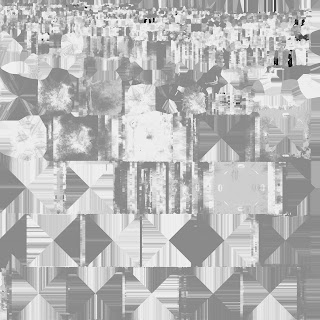
Above were my initial silhouettes. I originally wanted to create a more organic device rather than the typical mechanical theme. Unfortunately I think I overshot for most of these designs and I struggled to get any of them to come together in zBrush or Maya.
---
My idea for the time machine project was to focus on a device rather than a full-scale machine. I wanted to create something that was somewhat compact but bulky at the same time. Alongside this I thought it would be interesting to take a more "experimental" approach to the narrative of the device, making it reminiscent of realistic military casing with fantasy elements for juxtaposition.
My initial model (above) was scrapped due to going way over the limit of tris without even coming close to finishing the low poly (18k!!) In the end I think this was due to the overuse of edge loops in attempt to create a smoother model without nailing the low poly first. I attempted to save the model by deleting unnecessary edge loops, however at that point I believed it would be easier just to start over!
Below is the final model.
 |
| Time Machine - 8202 tris |
Sticking with the juxtapose of realism and fantasy, I opted for a concept where a key powered by a experimental crystal would allow doors to become rifts into the future or past (depending on the key used and the age of the door). The user can only travel along the lifespan of the door from when it was first installed to its destruction.
When thinking about damage for the casing, I thought about the experimental element being quite radioactive, thus I chose a more metallic and industrial casing rather than the typical polymer military casing. This allowed me to apply rust and scratches quite deeply into the metal rather than simply scuffs on plastic. Sticking to the narrative of the device I applied groves in the casing to hold the crystals to make the device feel like it needs to be powered more than usual. Applying a warning sign to the back of the case also reinforced the idea of an experimental device and the radioactivity of the crystals.
I also wanted to convey a "lost" feel to the device - snow and frost seemed to compliment the rusted and degraded surface quite well. I applied what I had learned from texturing my pillar in Substance Painter to improve the quality of my maps and variation of texture.
I could imagine a scene where the player would stumble upon the device in heavy snow, with dim light emitting from it.

If I were to improve the model more I would focus more on the function of the device itself. I would also refine the low poly a little more as I feel it looks a bit too rugged. Some of the textures are also warped slightly due to more problems with UV mapping. Planar projecting the various faces on the model kept causing the previous projections to be deleted thus I could not UV the entire model by hand. I had to opt for the automatic unwrap and try my best to make sure I had as little errors as possible.
 |
| Ambient Occlusion |
 |
| Emissive |
 |
| Albedo |
 |
| Height |
 |
| Metallic |
 |
| Normal |
 |
| Roughness |
 |
| UV |














